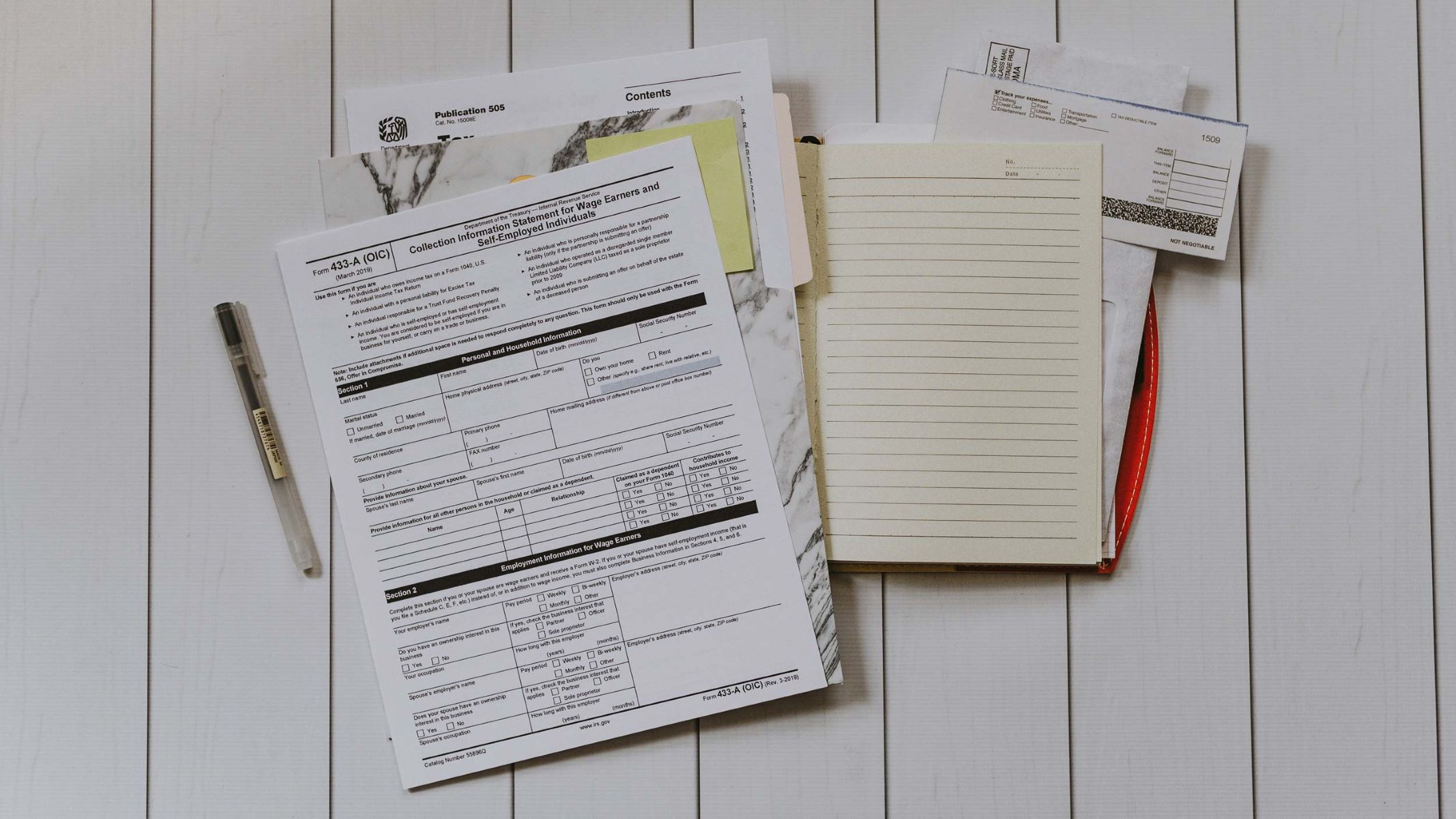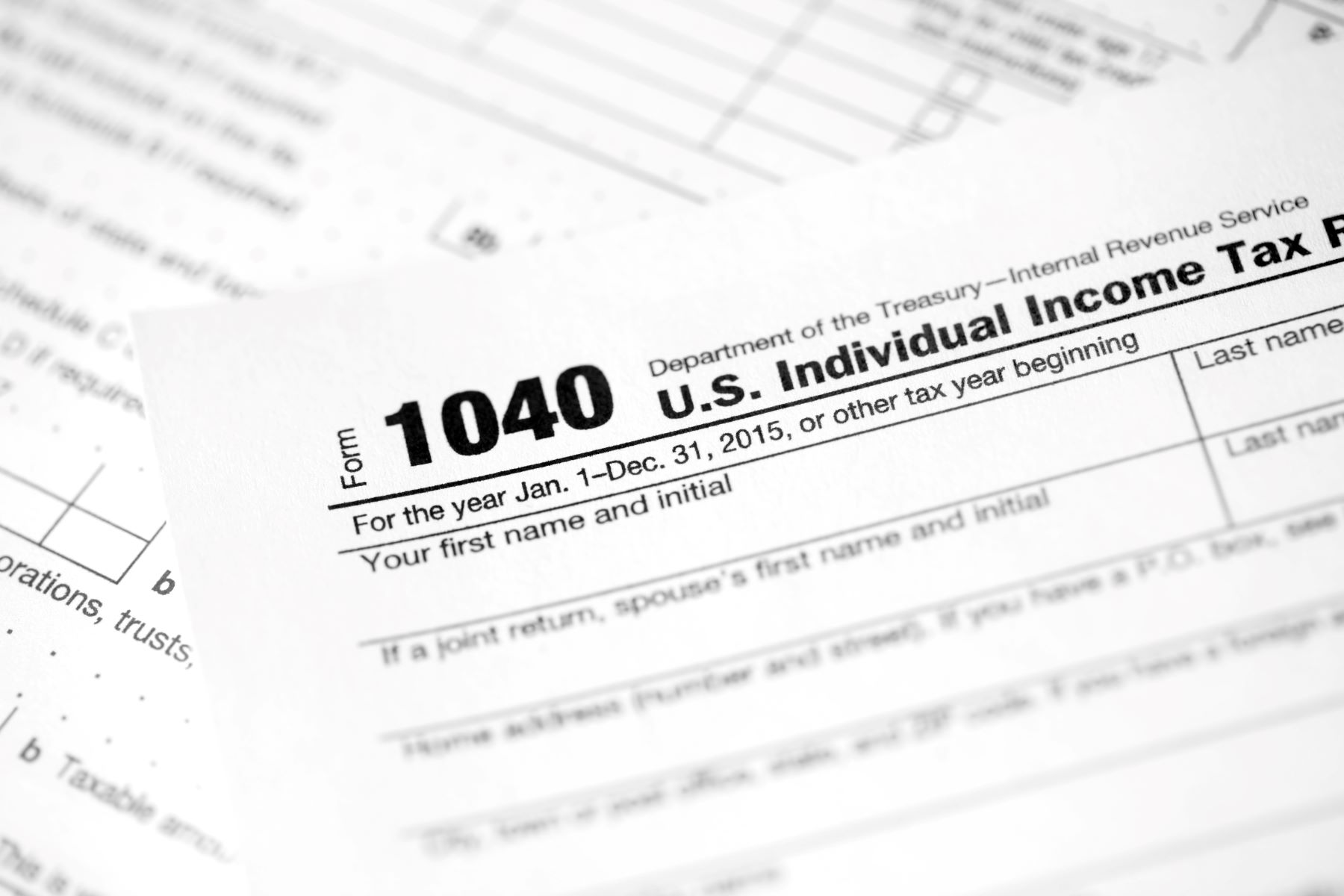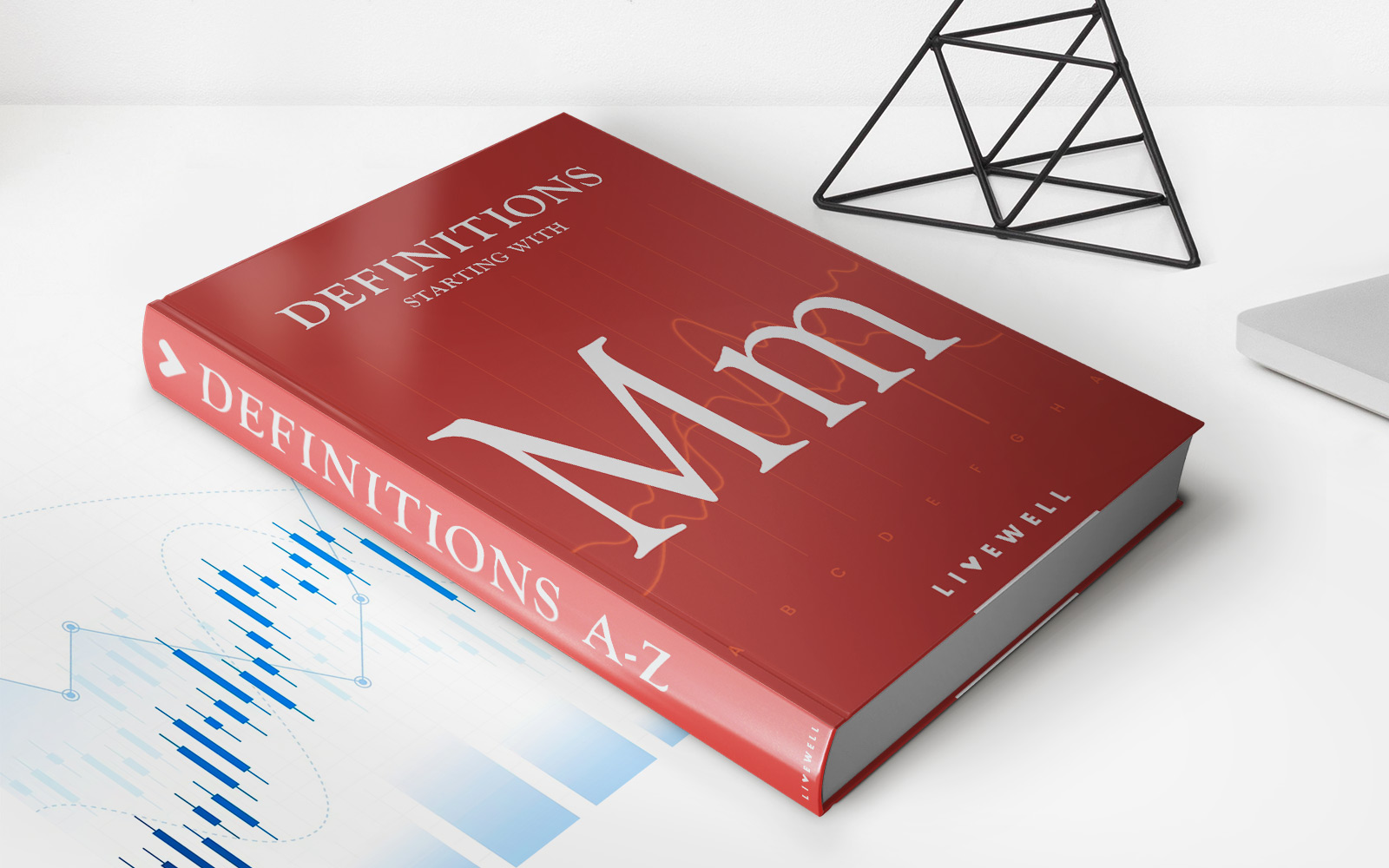Home>Finance>Where To Put 401K Contributions On A Tax Return


Finance
Where To Put 401K Contributions On A Tax Return
Modified: March 1, 2024
Learn the proper way to report your 401K contributions on your tax return. Explore useful tips and advice for maximizing your tax benefits in the field of finance.
(Many of the links in this article redirect to a specific reviewed product. Your purchase of these products through affiliate links helps to generate commission for LiveWell, at no extra cost. Learn more)
Table of Contents
Introduction
Welcome to our comprehensive guide on where to put 401K contributions on a tax return. Understanding how to report your 401K contributions correctly is essential for maximizing your tax benefits and avoiding any potential penalties or complications.
But first, let’s briefly discuss what a 401K contribution is and why it is important. A 401K is a retirement savings plan sponsored by employers that allows employees to contribute a portion of their pre-tax income towards their retirement savings. These contributions are tax-deferred, meaning you don’t have to pay taxes on them until you withdraw the money from your 401K account.
Contributing to a 401K not only helps you save for your retirement but also offers tax advantages. By contributing to a 401K, you can lower your taxable income for the year, potentially pushing you into a lower tax bracket and reducing your overall tax liability.
However, the tax treatment of 401K contributions varies depending on the type of 401K plan you have, whether it’s a traditional 401K or a Roth 401K. Additionally, there are specific rules and guidelines for reporting different types of 401K contributions on your tax return.
In this guide, we will walk you through the various types of 401K contributions and how to report them correctly on your tax return. Whether you contribute to a traditional 401K, a Roth 401K, or have employer match contributions, we will provide you with the information you need to navigate the tax reporting process effectively. We will also cover reporting excess contributions and early withdrawals from your 401K account.
Understanding how to report your 401K contributions properly can make a significant difference in your tax situation. So, let’s dive in and explore the different aspects of reporting 401K contributions on your tax return!
Understanding 401K Contributions
Before we delve into the details of reporting 401K contributions on your tax return, it’s important to have a solid understanding of what 401K contributions are and how they work.
Simply put, a 401K contribution is the amount of money that you, as an employee, contribute to your 401K retirement savings account. This contribution is deducted from your pre-tax income, meaning that it is taken out of your paycheck before taxes are applied.
By contributing to a 401K, you are not only saving for your future retirement but also gaining certain tax advantages. The tax benefits of 401K contributions depend on the type of 401K plan you have, whether it’s a traditional 401K or a Roth 401K.
In a traditional 401K plan, your contributions are made with pre-tax dollars. This means that the amount you contribute reduces your taxable income for the year. Consequently, you won’t pay taxes on your 401K contributions or any investment gains until you withdraw the funds in retirement.
On the other hand, in a Roth 401K plan, your contributions are made with after-tax dollars. This means that your contributions are not tax-deductible. However, the advantage of a Roth 401K is that qualified withdrawals, including contributions and investment gains, are tax-free in retirement.
401K contributions are subject to annual contribution limits set by the Internal Revenue Service (IRS). In 2022, the maximum contribution limit for employees under the age of 50 is $20,500 for both traditional and Roth 401K plans. If you’re 50 or older, you can make additional catch-up contributions of up to $6,500, bringing the total maximum contribution to $27,000.
It’s important to note that employer match contributions are separate from your personal contributions. Employer match contributions are made by your employer and are typically based on a percentage of your salary. These contributions can help boost your retirement savings even further.
Now that we have a basic understanding of 401K contributions, let’s explore how to report them correctly on your tax return based on the different types of contributions you may have made.
Determining Tax Deductible Contributions
When it comes to reporting your 401K contributions on your tax return, one crucial aspect to consider is determining the tax deductibility of those contributions. The tax treatment of your contributions depends on whether you have a traditional 401K or a Roth 401K.
In a traditional 401K plan, your contributions are made with pre-tax dollars. This means that the amount you contribute reduces your taxable income for the year. Your contributions are not subject to federal income tax, state income tax (in most states), or Social Security and Medicare taxes.
For example, let’s say your annual salary is $50,000, and you contribute $5,000 to your traditional 401K. This $5,000 contribution is deducted from your taxable income, reducing it to $45,000. As a result, you will only pay taxes on the remaining $45,000 of your income.
However, it’s important to note that while your contributions are tax-deductible, you will have to pay taxes on them, along with any investment gains, when you withdraw the funds from your traditional 401K in retirement. At that time, your withdrawals will be subject to ordinary income tax rates.
On the other hand, in a Roth 401K plan, your contributions are made with after-tax dollars. This means that your contributions are not tax-deductible, and you will pay taxes on the income used to make the contributions in the current tax year.
Why would someone choose a Roth 401K if the contributions are not tax-deductible? The main advantage of a Roth 401K is that qualified withdrawals, including contributions and investment gains, are tax-free in retirement. This can be particularly advantageous if you expect to be in a higher tax bracket in the future or anticipate that tax rates will increase.
It’s important to consult with a tax professional or financial advisor to determine the best strategy for your individual circumstances. They can help you assess whether a traditional or Roth 401K is more beneficial for your retirement and tax planning goals.
Now that we understand the tax implications of traditional and Roth 401K contributions, let’s dive into how to report these contributions correctly on your tax return.
Reporting Traditional 401K Contributions
When it comes to reporting your traditional 401K contributions on your tax return, there are a few key steps to follow. This ensures that you accurately reflect your contributions and take advantage of the tax benefits associated with them.
The first step is to obtain your Form W-2 from your employer. Your employer is required to provide you with this form, which summarizes your wages and the amounts withheld for taxes, including your 401K contributions.
Box 1 of your W-2 will show your total wages, which includes your 401K contributions for the year. However, your 401K contributions are not included as taxable income in Box 1. Instead, they are subtracted from your total wages in Box 1 and reported separately in Box 12 with the code “D”.
Box 12 of your W-2 is where your total 401K contributions for the year will be listed. The amount reported in this box includes both your personal contributions and any employer match contributions made on your behalf. This amount is already subtracted from your Box 1 wages, so you don’t need to deduct it again.
When filing your tax return, you will need to transfer the amount from Box 12 of your W-2 to the appropriate section of your tax form. For most taxpayers, this will be line 7a of Form 1040 or line 1 of Form 1040A.
If you use tax software or engage a tax professional, they will prompt you to enter the amount from Box 12 of your W-2. The software or tax professional will then automatically calculate the tax deduction for your traditional 401K contributions and incorporate it into your overall tax return.
It’s important to double-check the accuracy of your Form W-2 and ensure that the 401K contributions reported in Box 12 match the contributions you made throughout the year. If you notice any discrepancies, reach out to your employer for clarification and, if necessary, request a corrected W-2 form.
Reporting your traditional 401K contributions correctly ensures that you receive the proper tax deductions and accurately reflect your retirement savings on your tax return. It’s always a good idea to consult with a tax professional or utilize tax software to ensure you navigate the reporting process accurately and efficiently.
Reporting Roth 401K Contributions
Reporting your Roth 401K contributions on your tax return differs from reporting traditional 401K contributions. While Roth contributions do not provide a tax deduction in the current tax year, it’s still important to accurately report them to track your retirement savings and comply with tax regulations.
When you contribute to a Roth 401K, your contributions are made with after-tax dollars. This means that you have already paid taxes on the income used to make the contributions. As a result, you won’t need to take any additional deductions or report the contributions as taxable income on your tax return.
In most cases, you won’t need to report Roth 401K contributions on your tax return because they do not impact your current year’s taxes. Unlike traditional 401K contributions, Roth contributions have no tax impact until you withdraw the funds in retirement.
However, it’s still important to keep track of your Roth 401K contributions for your own records and to report any conversions or rollovers of Roth funds. If you converted funds from a traditional 401K or a traditional IRA to a Roth 401K during the year, you will need to report those conversions on your tax return using Form 8606.
Form 8606 is used to report any non-deductible contributions and conversions made to a Roth account. It ensures that you don’t pay taxes on contributions that have already been taxed. Your tax software or tax professional should guide you through the process of filling out this form correctly based on your specific circumstances.
Remember, for Roth 401K contributions, the tax benefit lies in the future. Qualified withdrawals from your Roth 401K, including contributions and investment gains, will be tax-free in retirement. It’s important to keep track of your annual contributions and any conversion or rollover activity to ensure accurate reporting when the time comes to withdraw funds from your account.
If you have any questions or uncertainties regarding reporting Roth 401K contributions, it’s always advisable to consult with a tax professional or use reliable tax software that is equipped to handle Roth contributions and conversions.
Now that we’ve covered reporting traditional and Roth 401K contributions, let’s move on to understanding how to report after-tax contributions.
Reporting After-Tax Contributions
When it comes to reporting after-tax contributions on your tax return, it’s important to understand how these contributions differ from traditional and Roth 401K contributions. After-tax contributions are made with money that has already been taxed, similar to Roth contributions, but they have unique considerations during tax reporting.
After-tax contributions are typically made when an individual exceeds the annual contribution limit for pre-tax contributions to their 401K. These contributions can be beneficial for those who wish to save more for retirement but are subject to different tax treatment compared to traditional and Roth contributions.
Unlike traditional 401K contributions, after-tax contributions are not tax-deductible in the year they are made. However, any earnings or growth on the after-tax contributions are tax-deferred until you withdraw the funds from your 401K account.
When it comes to reporting after-tax contributions on your tax return, you’ll need to keep track of these contributions separately from your pre-tax or Roth contributions. You should consult the Form W-2 provided by your employer to determine the amount of after-tax contributions made for the year.
Since after-tax contributions are not tax-deductible, they are not reported separately on your tax return. You will still report the total amount of your 401K contributions, including both pre-tax and after-tax contributions, on the appropriate line of your tax return (e.g., line 7a of Form 1040 or line 1 of Form 1040A).
It’s worth noting that, similar to Roth 401K contributions, the tax benefits of after-tax contributions will be realized in the future. When you withdraw funds from your 401K account, the after-tax contributions will not be subject to taxes since they have already been taxed. However, any earnings or growth on those contributions will be subject to taxes at that time.
If you have made after-tax contributions to your 401K, it’s essential to keep track of your contributions and work with a tax professional or use reliable tax software to ensure accurate reporting and to calculate the taxable portion of your withdrawals in the future.
Now that we have covered the reporting of different types of 401K contributions, let’s move on to understanding how to report employer match contributions.
Reporting Employer Match Contributions
Employer match contributions are a valuable benefit offered by many employers as part of their 401K plans. These contributions can significantly boost your retirement savings, but they also require careful reporting on your tax return.
When it comes to reporting employer match contributions on your tax return, there are a few key points to consider. First, employer match contributions are typically made with pre-tax dollars, similar to traditional 401K contributions. This means that the amount of the match contribution reduces your taxable income for the year.
The amount of employer match contributions you receive throughout the year will be reported on your Form W-2 in Box 12 with the code “D”, along with your personal 401K contributions. This information is crucial for accurate reporting on your tax return.
When filing your tax return, you will need to transfer the amount of employer match contributions from Box 12 of your W-2 to the appropriate line on your tax form. In most cases, this will be line 7a of Form 1040 or line 1 of Form 1040A.
It’s essential to note that the employer match contributions are already included in your Box 1 wages on your W-2. Therefore, you don’t need to separately deduct the match contributions when calculating your taxable income.
Reporting employer match contributions correctly ensures that you receive the appropriate tax benefits and accurately reflect your overall 401K contributions on your tax return.
It’s important to review your Form W-2 and confirm that the employer match contributions reported in Box 12 match the contributions you received throughout the year. If you notice any discrepancies, reach out to your employer for clarification and, if necessary, request a corrected W-2 form.
Keep in mind that the reporting of employer match contributions can vary depending on your specific situation and the employer’s 401K plan structure. It’s always a good idea to consult with a tax professional or utilize tax software to ensure you navigate the reporting process accurately and maximize the tax benefits of your employer match contributions.
Now that we have covered reporting employer match contributions, let’s move on to understanding how to report excess contributions, if applicable.
Reporting Excess Contributions
Contributing to your 401K is a smart way to save for retirement, but it’s important to stay within the annual contribution limits set by the IRS. If you accidentally contribute more than the allowed limit, you may have excess contributions that need to be addressed when filing your tax return.
Excess contributions occur when the total amount contributed to your 401K surpasses the annual contribution limit. In 2022, the contribution limit for employees under the age of 50 is $20,500 for both traditional and Roth 401K plans. If you’re 50 or older, you can make additional catch-up contributions of up to $6,500, making the total maximum contribution $27,000.
If you discover that you have made excess contributions to your 401K, you typically have two options for correcting the mistake. The first option is to withdraw the excess contributions before the tax filing deadline, including any earnings associated with the excess contributions. This withdrawal must be indicated as an excess contribution when reporting on your tax return.
To report the excess contribution withdrawal on your tax return, you will need to complete IRS Form 5329. This form is used to calculate any additional taxes or penalties associated with the excess contributions and to request a waiver for penalties if you qualify.
The second option for correcting excess contributions is to carry them forward to a future tax year. Some 401K plans allow you to apply the excess contributions to future years’ contributions, effectively utilizing the excess amount in a later tax year. This option eliminates the need for immediate withdrawal and can help avoid penalties associated with excess contributions.
However, it’s essential to consult with a tax professional or financial advisor to ensure that carrying forward excess contributions is the best course of action for your specific circumstances. They can provide guidance on how to properly report the excess contributions and navigate the necessary paperwork.
Reporting excess contributions correctly on your tax return is crucial to avoid tax penalties and ensure compliance with IRS regulations. Therefore, it’s recommended to work with a tax professional or use reliable tax software that can guide you in accurately reporting and addressing the excess contributions.
Now that we have covered reporting excess contributions, let’s move on to understanding how to report early withdrawals from your 401K.
Reporting Early Withdrawals
Withdrawing funds from your 401K account before reaching the age of 59 ½ is considered an early withdrawal. While it may be tempting to tap into your retirement savings early, it’s important to understand the tax implications and reporting requirements associated with early withdrawals.
When you make an early withdrawal from your 401K, the withdrawn amount is subject to income tax in the year that you receive it. In addition to the income tax, you may also be subject to a 10% early withdrawal penalty imposed by the IRS. However, there are certain exceptions to this penalty, such as disability, certain medical expenses, or using the funds for a first-time home purchase.
When reporting early withdrawals on your tax return, you will receive a Form 1099-R from your plan administrator, which details the distribution you received from your 401K account. This form will indicate the taxable amount of the withdrawal, any associated taxes withheld, and whether any exceptions to the early withdrawal penalty apply.
To report the early withdrawal on your tax return, you will need to transfer the information from your Form 1099-R to the appropriate section of your tax form. The taxable amount of the early withdrawal is typically reported on line 4a of Form 1040 or 1040A.
If you qualify for an exception to the early withdrawal penalty, you will need to complete Form 5329. This form is used to calculate the penalty if applicable or to request a waiver of the penalty due to qualifying circumstances.
It’s crucial to report early withdrawals accurately to ensure that you fulfill your tax obligations and minimize any potential penalties or complications. Therefore, it’s recommended to work with a tax professional or utilize reliable tax software to navigate the reporting process accurately and determine any applicable exceptions or waivers.
Remember, early withdrawals from your 401K should generally be a last resort. These funds are intended to support your retirement, and early withdrawals can significantly impact your long-term financial security. It’s always a good idea to explore other alternatives or consult with a financial advisor before opting for an early withdrawal.
Now that we have covered reporting early withdrawals, let’s summarize the key points before we conclude our guide on where to report 401K contributions on a tax return.
Conclusion
Understanding how to report your 401K contributions on your tax return is crucial for optimizing your tax benefits and ensuring compliance with IRS regulations. By correctly reporting your contributions, you can take advantage of tax deductions, tax-free growth, and maximize your retirement savings.
Throughout this guide, we’ve covered various aspects of reporting 401K contributions, including traditional contributions, Roth contributions, after-tax contributions, employer match contributions, excess contributions, and early withdrawals. It’s important to note that the specific reporting requirements may vary depending on your individual circumstances and the 401K plan offered by your employer.
When reporting your 401K contributions, always refer to your Form W-2 provided by your employer to accurately report the information from Box 12. Additionally, consider utilizing tax software or consulting with a tax professional to ensure the accuracy of your tax return and optimize your tax benefits.
Remember, your 401K contributions are not only helping you save for retirement but also offer valuable tax advantages. By utilizing the appropriate reporting methods and strategies, you can effectively navigate the tax reporting process and make the most of your retirement savings.
Lastly, it’s worth emphasizing that seeking professional advice or working with a financial advisor is valuable when it comes to making important decisions about your 401K contributions and tax reporting. These professionals can provide personalized guidance tailored to your specific financial goals and circumstances.
By staying informed, taking advantage of available resources, and making informed choices, you can ensure that your 401K contributions are reported correctly on your tax return, allowing you to maximize your retirement savings and enjoy a financially secure future.














